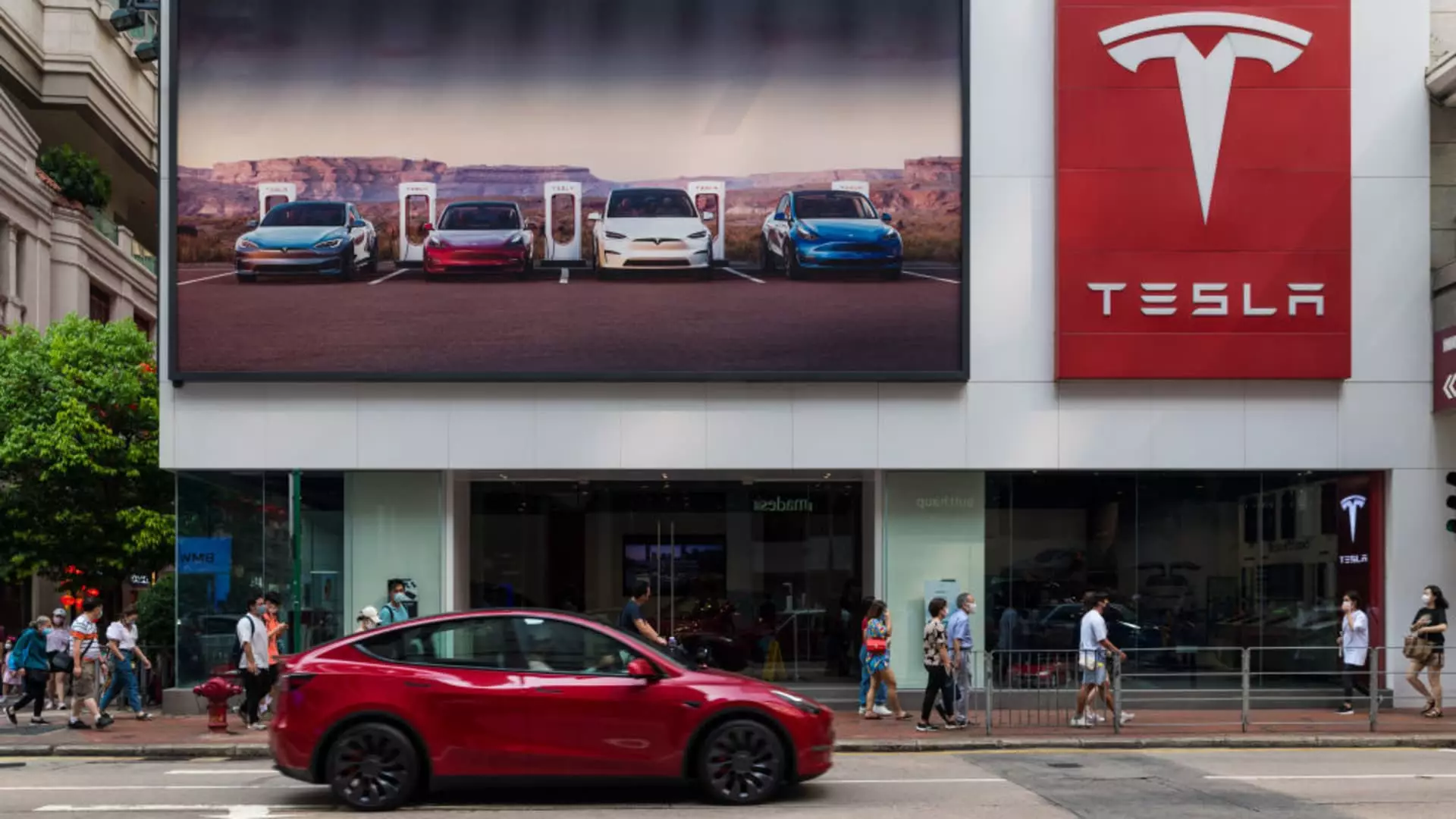Tesla, the electric vehicle powerhouse, experienced a tumultuous fourth quarter that drew mixed reviews from analysts and investors alike. The reported earnings and revenue failed to meet market expectations, overshadowing the company’s significant advancements in the electric vehicle sector. While there was a slight uptick in overall revenue, the 8% decline in automotive revenue compared to the previous year raised eyebrows. Moreover, Tesla’s net income saw a staggering 71% drop, casting a shadow over its operational effectiveness and underlying business strategy.
On the surface, Tesla’s total revenue saw a modest increase of roughly 2%. However, this growth is somewhat misleading, as it is largely attributable to a one-time accounting gain linked to a shift in regulations governing its bitcoin holdings. This substantial $600 million gain indicates an underlying volatility in Tesla’s primary business model. As the automotive revenue pulled back significantly, analysts are left questioning the sustainability of the company’s profit trajectory. The facade of growth comes crumbling down when considering the underlying challenges the company faces in terms of production costs and market demand.
The response from analysts following Tesla’s report has been predominantly bleak. Wells Fargo analyst Colin Langan articulated a rather grim outlook, indicating a potential 68% downside from the company’s previous closing price. His apprehensions center on moderating delivery growth, likely driven by diminishing demand and a potential decrease in profit margins due to future price cuts. This sentiment reflects a growing concern that Tesla may not maintain its aggressive growth trajectory.
Similarly, UBS’s Joseph Spak offered a mixed review. While he raised the price target for Tesla shares to $259, implying a 33% downside, he cautioned that the optimistic projections surrounding Tesla’s foray into humanoid robotics are not yet reflecting in the current valuation. This skepticism raises valid questions about the long-term relevance of these ventures as they relate to Tesla’s immediate financial health.
Goldman Sachs adopted a more neutral stance, projecting an 11% downside, noting the disparity between Tesla’s remarkable long-term potential and its current valuation, which appears to be fully priced in. Concerns about the timing and safety of their Full Self-Driving (FSD) technology also contributed to their reticence.
On the other hand, Evercore ISI’s analyst, Chris McNally, approached Tesla with caution, highlighting a drastic shift in the company’s core business model. He noted that the electric vehicle and energy sectors now constitute less than 40% of Tesla’s market capitalization, suggesting a radical transformation that could hinder straightforward financial comparisons.
Despite the evident shortcomings in its quarterly performance, some analysts like Morgan Stanley’s Adam Jonas remain bullish on Tesla’s prospects. They argue that the company’s transformation from an automotive-centric enterprise to a diversified player in artificial intelligence and robotics could unlock new pathways for growth. Jonas recognizes the fluctuating dynamics of the automotive market but believes that Tesla’s broader vision could sustain its relevance and potentially lead to new financial heights.
The optimism surrounding Tesla’s future endeavors raises essential questions about the balance between current operational performance and the burgeoning potential of its technological innovations. The next models and technologies, including FSD and the anticipated humanoid robots, may take years to reach maturity, yet they present a compelling narrative of long-term growth.
Tesla’s fourth-quarter performance has unveiled a mixed reality for the electric vehicle manufacturer. While the company continues to be a pioneer in the automotive space, mounting challenges related to revenue generation, regulatory scrutiny, and competition necessitate a cautious approach from investors and analysts. The reports signal a critical juncture for Tesla, as it endeavors to redefine itself amid shifting market dynamics. Whether the strategic pivot towards AI and robotics will bear fruit remains to be seen, as shareholders ponder the sustainability of Tesla’s once-unassailable market position. As the electric vehicle sector grows increasingly crowded, adaptive strategies and innovation will be key in navigating the uncertain terrain ahead.

